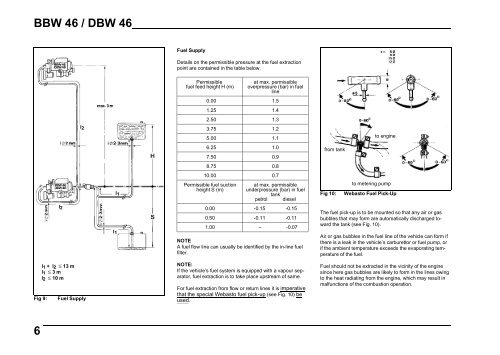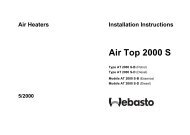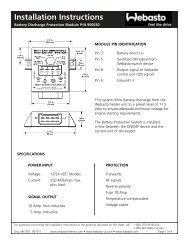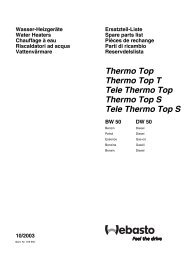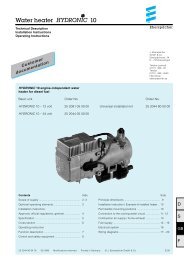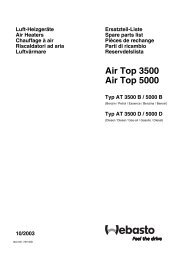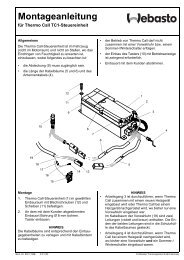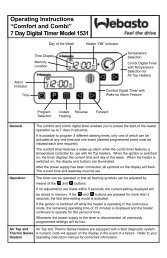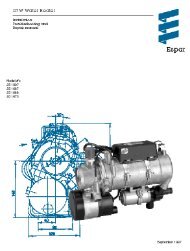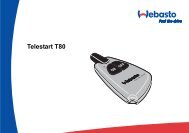BBW - DBW 46 - VW-Bus-T4.de
BBW - DBW 46 - VW-Bus-T4.de
BBW - DBW 46 - VW-Bus-T4.de
Create successful ePaper yourself
Turn your PDF publications into a flip-book with our unique Google optimized e-Paper software.
<strong>BBW</strong> <strong>46</strong> / <strong>DBW</strong> <strong>46</strong><br />
Fuel Supply<br />
Details on the permissible pressure at the fuel extraction<br />
point are contained in the table below.<br />
l 1<br />
l 2<br />
l 1 + l2 ≤ 13 m<br />
l 1 ≤ 3 m<br />
l 2 ≤ 10 m<br />
Fig 9:<br />
Fuel Supply<br />
l 2<br />
l 1<br />
Permissible<br />
fuel feed height H (m)<br />
at max. permissible<br />
overpressure (bar) in fuel<br />
line<br />
0.00 1.5<br />
1.25 1.4<br />
2.50 1.3<br />
3.75 1.2<br />
5.00 1.1<br />
6.25 1.0<br />
7.50 0.9<br />
8.75 0.8<br />
10.00 0.7<br />
Permissible fuel suction<br />
height S (m)<br />
at max. permissible<br />
underpressure (bar) in fuel<br />
tank<br />
petrol diesel<br />
0.00 -0.15 -0.15<br />
0.50 -0.11 -0.11<br />
1.00 – -0.07<br />
NOTE<br />
A fuel flow line can usually be identified by the in-line fuel<br />
filter.<br />
NOTE:<br />
If the vehicle’s fuel system is equipped with a vapour separator,<br />
fuel extraction is to take place upstream of same.<br />
For fuel extraction from flow or return lines it is imperative<br />
that the special Webasto fuel pick-up (see Fig. 10) be<br />
used.<br />
from tank<br />
Fig 10:<br />
to engine<br />
to metering pump<br />
Webasto Fuel Pick-Up<br />
The fuel pick-up is to be mounted so that any air or gas<br />
bubbles that may form are automatically discharged toward<br />
the tank (see Fig. 10).<br />
Air or gas bubbles in the fuel line of the vehicle can form if<br />
there is a leak in the vehicle’s carburettor or fuel pump, or<br />
if the ambient temperature exceeds the evaporating temperature<br />
of the fuel.<br />
Fuel should not be extracted in the vicinity of the engine<br />
since here gas bubbles are likely to form in the lines owing<br />
to the heat radiating from the engine, which may result in<br />
malfunctions of the combustion operation.<br />
6


